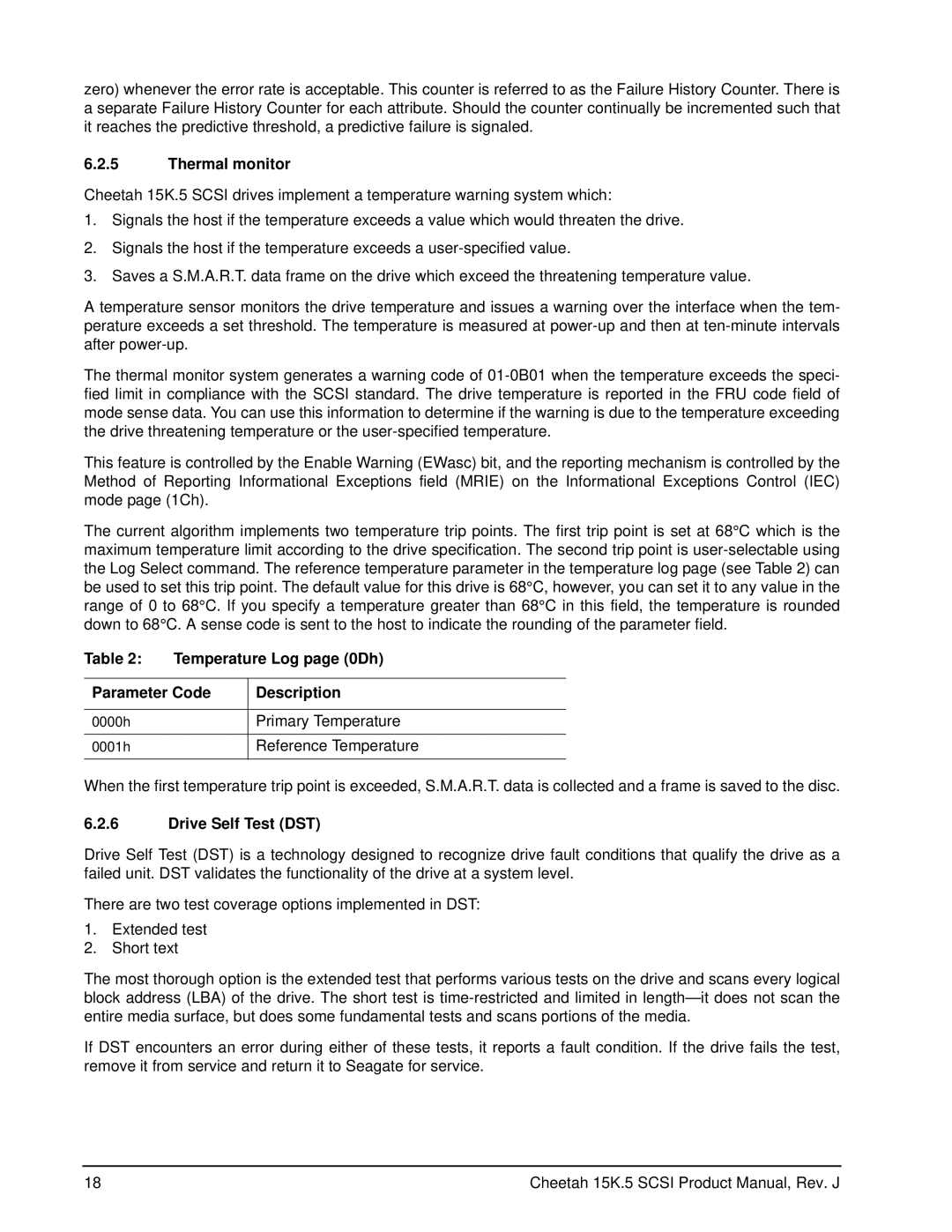zero) whenever the error rate is acceptable. This counter is referred to as the Failure History Counter. There is a separate Failure History Counter for each attribute. Should the counter continually be incremented such that it reaches the predictive threshold, a predictive failure is signaled.
6.2.5Thermal monitor
Cheetah 15K.5 SCSI drives implement a temperature warning system which:
1.Signals the host if the temperature exceeds a value which would threaten the drive.
2.Signals the host if the temperature exceeds a
3.Saves a S.M.A.R.T. data frame on the drive which exceed the threatening temperature value.
A temperature sensor monitors the drive temperature and issues a warning over the interface when the tem- perature exceeds a set threshold. The temperature is measured at
The thermal monitor system generates a warning code of
This feature is controlled by the Enable Warning (EWasc) bit, and the reporting mechanism is controlled by the Method of Reporting Informational Exceptions field (MRIE) on the Informational Exceptions Control (IEC) mode page (1Ch).
The current algorithm implements two temperature trip points. The first trip point is set at 68°C which is the maximum temperature limit according to the drive specification. The second trip point is
Table 2: Temperature Log page (0Dh)
Parameter Code | Description |
|
|
0000h | Primary Temperature |
|
|
0001h | Reference Temperature |
|
|
When the first temperature trip point is exceeded, S.M.A.R.T. data is collected and a frame is saved to the disc.
6.2.6Drive Self Test (DST)
Drive Self Test (DST) is a technology designed to recognize drive fault conditions that qualify the drive as a failed unit. DST validates the functionality of the drive at a system level.
There are two test coverage options implemented in DST:
1.Extended test
2.Short text
The most thorough option is the extended test that performs various tests on the drive and scans every logical block address (LBA) of the drive. The short test is
If DST encounters an error during either of these tests, it reports a fault condition. If the drive fails the test, remove it from service and return it to Seagate for service.
18 | Cheetah 15K.5 SCSI Product Manual, Rev. J |
